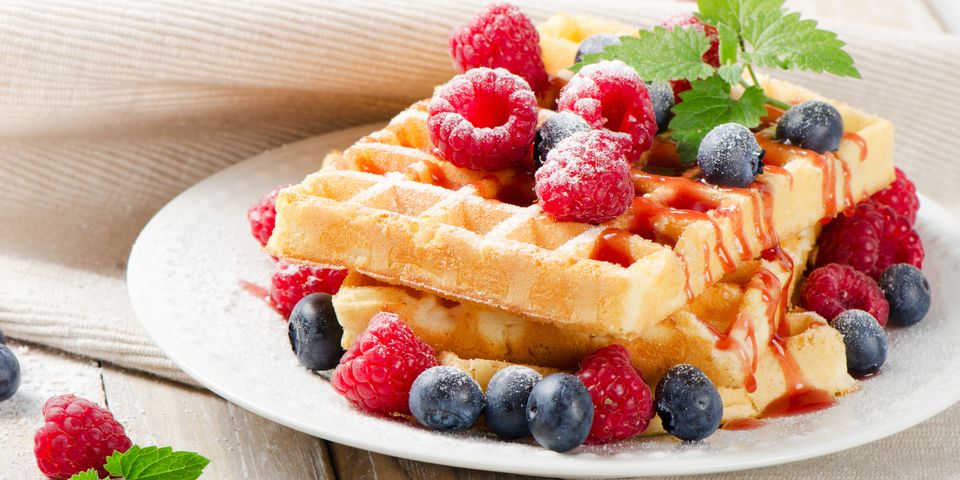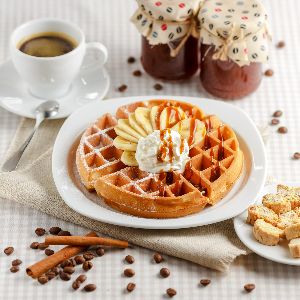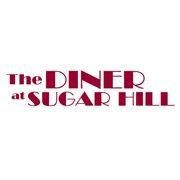
Belgian waffles are among the most widely beloved breakfast fare served in restaurants throughout the U.S. These sweet and crispy flat cakes make for a delicious and satisfying meal, and they also have a fascinating history. The following guide explores the beginnings of this dish and its rise to popularity.
Origins & Evolution
The culinary ancestors of waffles are likely flat cakes known as obelios or oublie prepared by chefs in Ancient Greece. Versions of these cakes were prepared well into the Middle Ages, when cooks began adding honey and cinnamon to sweeten the batter. During this time, medieval craftsmen started forging cooking irons that featured a gridded pattern. In addition to ensuring even cooking, these irons gave the cakes a crispy exterior and soft interior, marking the birth of the waffle. Though people had been preparing versions of the dish for many years, the first recorded mention of the word "waffles" did not appear until the early 17th century.
Brussels vs. Liege Waffles

Belgian waffles are distinct from other waffles due to their lighter batter, larger squares, and deeper pockets. They originated in Brussels, Belgium, around 1874 and were originally called "Brussels waffles" in honor of the nation's capital city in which they were invented. Often served plain or with fresh whipped cream and sliced strawberries, they first garnered popularity when vendors sold them outside churches on feast days.
A lesser-known version of the Belgian waffle originated in Liege, a city in the Wallonia region of Belgium. Denser and sweeter, these waffles have deep wells and a perfectly rectangular shape. They were allegedly invented when the Prince-Bishop of Liege asked his cooks to prepare a confection made with extra sugar. They used pear sugar, which gave the waffles a delicious caramelization and chewy texture.
Arrival in the U.S.
Belgian waffles made their debut in the U.S. at the 1962 World’s Fair in Seattle. However, they did not achieve American popularity until the 1964 to 1965 World’s Fair in Queens, New York. Belgian native Maurice Vermersch sold Brussels waffles at the fair but changed the name to "Belgian waffles" to make this street food more marketable. His plan worked, and the treat was a hit. Eventually, it became a staple on restaurant menus throughout the country and became a widely beloved breakfast dish. Americans tend to eat Belgian waffles with more toppings, such as syrup, butter, and powdered sugar, along with fresh fruits such as strawberries and bananas. Some chefs even incorporate pecans into the batter or serve Belgian waffles with eggs, bacon, and sausage.
The next time you're in the mood for Belgian waffles, head to The Diner at Sugar Hill in Georgia. They serve breakfast fare, including Belgian waffles with butter, syrup, and powdered sugar, to hungry patrons throughout Gwinnett and Forsyth counties. Call (770) 831-0180 to ask about daily specials, or visit the website to view their menu of breakfast, lunch, and dinner dishes.
About the Business
Have a question? Ask the experts!
Send your question

